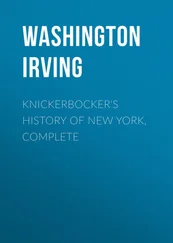It was a long time before William the Testy was made sensible how completely his grand project of finance was turned against him by his eastern neighbors; nor would he probably have ever found it out had not tidings been brought him that the Yankees had made a descent upon Long Island, and had established a kind of mint at Oyster Bay, where they were coining up all the oyster banks.
Now this was making a vital attack upon the province in a double sense, financial and gastronomical. Ever since the council dinner of Oloffe the Dreamer, at the founding of New Amsterdam, at which banquet the oyster figured so conspicuously, this divine shell–fish has been held in a kind of superstitious reverence at the Manhattoes; as witness the temples erected to its cult in every street and lane and alley. In fact, it is the standard luxury of the place, as is the terrapin at Philadelphia, the soft crab at Baltimore, or the canvas–back at Washington.
The seizure of Oyster Bay, therefore, was an outrage not merely on the pockets, but on the larders of the New Amsterdammers; the whole community was aroused, and an oyster crusade was immediately set on foot against the Yankees. Every stout trencherman hastened to the standard; nay, some of the most corpulent burgomasters and schepens joined the expedition as a corps de reserve , only to be called into action when the sacking commenced.
The conduct of the expedition was entrusted to a valiant Dutchman, who, for size and weight, might have matched with Colbrand, the Danish champion, slain by Guy of Warwick. He was famous throughout the province for strength of arm and skill at quarter–staff, and hence was named Stoffel Brinkerhoff; or rather, Brinkerhoofd; that is to say, Stoffel the Head–breaker.
This sturdy commander, who was a man of few words but vigorous deeds, led his troops resolutely on through Nineveh, and Babylon, and Jericho, and Patch–hog, and other Long Island towns, without encountering any difficulty of note, though it is said that some of the burgomasters gave out at Hard–scramble Hill and Hungry Hollow; and that others lost heart, and turned back at Puss–panick. With the rest he made good his march until he arrived in the neighborhood of Oyster Bay.
Here he was encountered by a host of Yankee warriors, headed by Preserved Fish, and Habakkuk Nutter, and Return Strong, and Zerubbabel Fisk, and Determined Cock! at the sound of whose names Stoffel Brinkerhoff verily believed the whole parliament of Praise–God Barebones had been let loose upon him. He soon found, however, that they were merely the "select men" of the settlement, armed with no weapon but the tongue, and disposed only to meet him on the field of argument. Stoffel had but one mode of arguing—that was with the cudgel; but he used it with such effect that he routed his antagonists, broke up the settlement, and would have driven the inhabitants into the sea, if they had not managed to escape across the Sound to the mainland by the Devil's Stepping–stones, which remain to this day monuments of this great Dutch victory over the Yankees.
Stoffel Brinkerhoff made great spoil of oysters and clams, coined and uncoined, and then set out on his return to the Manhattoes. A grand triumph, after the manner of the ancients, was prepared for him by William the Testy. He entered New Amsterdam as a conqueror, mounted on a Narraganset pacer. Five dried codfish on poles, standards taken from the enemy, were borne before him; and an immense store of oysters and clams, Weathersfield onions, and Yankee "notions" formed the spolia opima; while several coiners of oyster–shells were led captive to grace the hero's triumph.
The procession was accompanied by a full band of boys and negroes, performing on the popular instruments of rattle–bones and clam–shells, while Anthony Van Corlear sounded his trumpet from the ramparts.
A great banquet was served up in the Stadthouse from the clams and oysters taken from the enemy, while the governor sent the shells privately to the mint, and had them coined into Indian money, with which he paid his troops.
It is moreover said that the governor, calling to mind the practice among the ancients to honor their victorious generals with public statues, passed a magnanimous decree, by which every tavern–keeper was permitted to paint the head of Stoffel Brinkerhoff upon his sign!
[36]In a manuscript record of the province, dated 1659, Library of the New York Historical Society, is the following mention of Indian money:—"Seawant, alias wampum. Beads manufactured from the Quahang or whelk, a shell–fish formerly abounding on our coasts, but lately of more rare occurrence of two colors, black and white; the former twice the value of the latter. Six beads of the white and three of the black for an English penny. The seawant depreciates from time to time. The New England people make use of it as a means of barter, not only to carry away the best cargoes which we send thither, but to accumulate a large quantity of beavers' and other furs, by which the company is defrauded of her revenues, and the merchants disappointed in making returns with that speed with which they might wish to meet their engagements; while their commissioners and the inhabitants remain overstocked with seawant, a sort of currency of no value except with the New Netherland savages," etc.
It has been remarked by the observant writer of the Stuyvesant manuscript, that under the administration of William Kieft the disposition of the inhabitants of New Amsterdam experienced an essential change, so that they became very meddlesome and factious. The unfortunate propensity of the little governor to experiment and innovation, and the frequent exacerbations of his temper, kept his council in a continual worry; and the council being to the people at large what yeast or leaven is to a batch, they threw the whole community in a ferment; and the people at large being to the city what the mind is to the body, the unhappy commotions they underwent operated most disastrously upon New Amsterdam; insomuch that, in certain of their paroxysms of consternation and perplexity, they begat several of the most crooked, distorted, and abominable streets, lanes, and alleys, with which this metropolis is disfigured.
The fact was, that about this time the community, like Balaam's ass, began to grow more enlightened than its rider, and to show a disposition for what is called "self–government." This restive propensity was first evinced in certain popular meetings, in which the burghers of New Amsterdam met to talk and smoke over the complicated affairs of the province, gradually obfuscating themselves with politics and tobacco smoke. Hither resorted those idlers and squires of low degree who hang loose on society and are blown about by every wind of doctrine. Cobblers abandoned their stalls to give lessons on political economy; blacksmiths suffered their fires to go out, while they stirred up the fires of faction; and even tailors, though said to be the ninth parts of humanity, neglected their own measures to criticise the measures of government.
Strange! that the science of government, which seems to be so generally understood, should invariably be denied to the only one called upon to exercise it. Not one of the politicians in question, but, take his word for it, could have administered affairs ten times better than William the Testy.
Under the instructions of these political oracles, the good people of New Amsterdam soon became exceedingly enlightened; and, as a matter of course, exceedingly discontented. They gradually found out the fearful error in which they had indulged, of thinking themselves the happiest people in creation; and were convinced that, all circumstances to the contrary not withstanding, they were a very unhappy, deluded, and consequently ruined people!
Читать дальше











